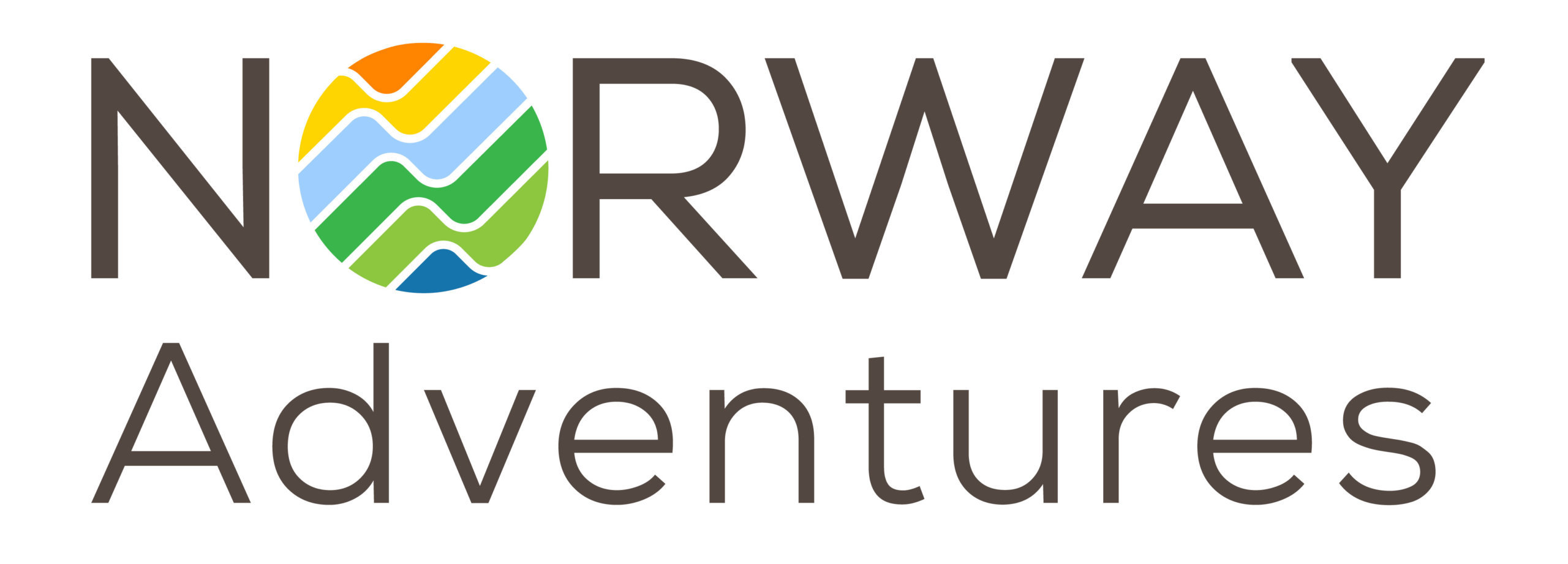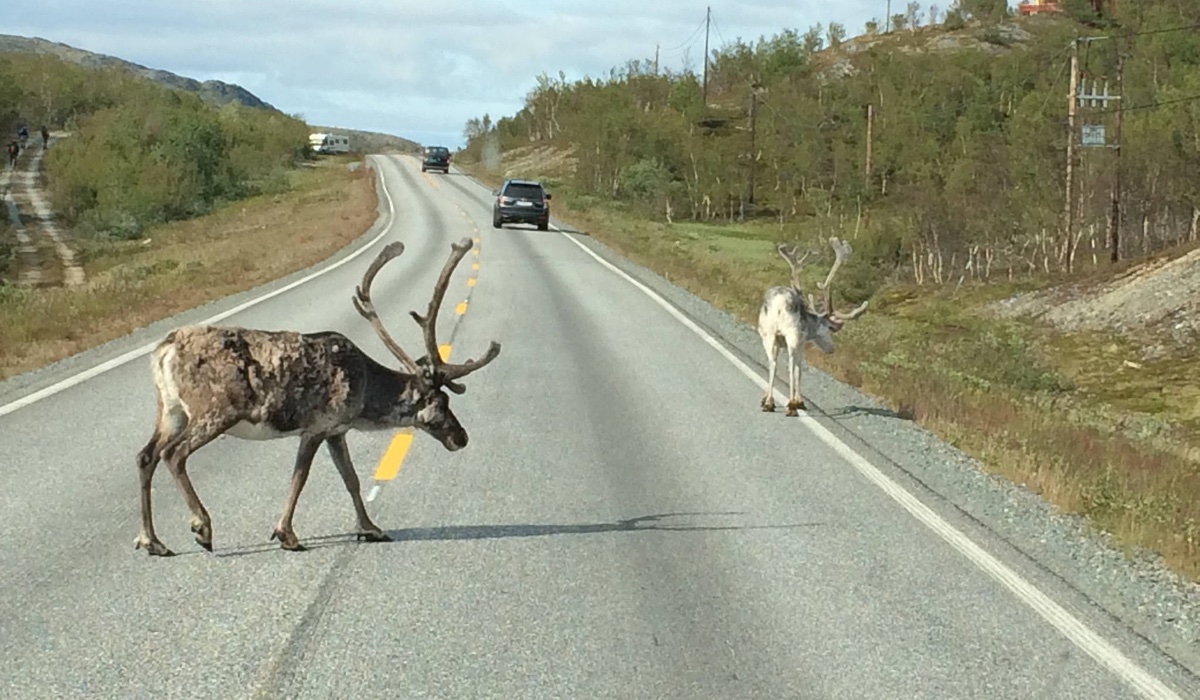Driving in Norway
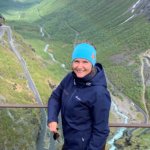
Tip 1: keep right and adjust your pace
Of course you will spend some time waiting for ferries, but also take into account that you might stop for pictures! As you drive along the fjords, the views will be too irresistible to drive past. Take a break in one of the designated areas to enjoy it. Please do not stop at the side of the road, and be aware of other traffic.
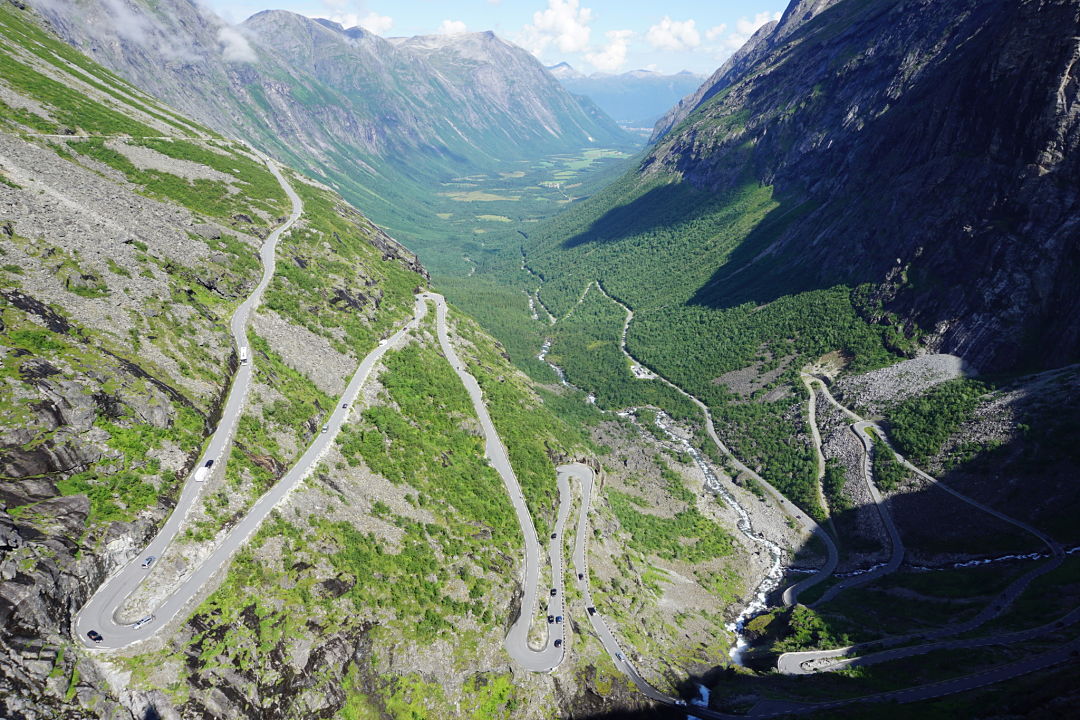
Trick: add 25% to your driving time
If you have somewhere to be, please add 25% on top of how long Google Maps says it will take. This way you will make sure you will never miss your ferry, tour, or flight while travelling in Norway.
Do not think about driving distance, use driving time (50 or 60 km per hour). Since there are hardly any highways in Norway, take your time and enjoy the winding roads and ever changing scenery.
Many tourists visiting Norway for the first time ask us this question
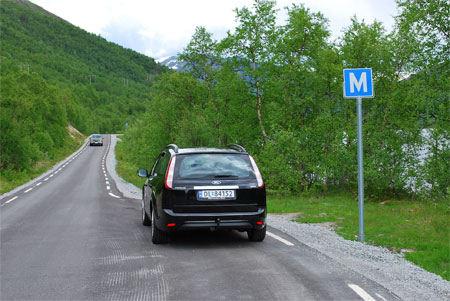
Meeting place
You will see these signs on narrow roads where two cars normally cannot pass. When you meet another car, you can use the designated areas that are marked with the M. Drive into this area and stop while the other car can pass.
Photo by Toralv Østvang via Wrapkids

End of adjusted speed limit
In villages, towns, and cities, the speed limit is usually 50 kmph (30 mph), unless otherwise indicated. The speed limit in the Norwegian countryside is 80 kmph (50 mph), except for the several highways around Oslo.
Photo by KV
Tip 2: Beware of the speed limit
Trick: better safe than sorry
The speed limit is there for a reason, be it oncoming cars, trees on the road, or even a literal deer in the headlights. Anything can happen. If you are not used to driving the Norwegian roads, you should drive a little slower than the speed limit. This way you also get to enjoy the landscape and views more!
Besides, you probably want to avoid getting a ticket for driving too fast. In Norway, exceeding the speed limit by 5 kmph costs you 800 NOK (80 EUR or 90 USD), and 2100 NOK (210 EUR or 230 USD) for speeding between 6 and 10 kmph! When driving in Norway, it is better to be safe than sorry, for you, fellow road users, your (rental) car, and your wallet.
Tip 3: Take the weather into account
In spring (even until the end of June) or early fall (end of September) you could experience snowfall higher up in the mountains and roads might be closed.
The travel designers at Norway Adventures always design the best itinerary based on the season you are travelling in. Our staff is also available for advice in case of extreme weather, helping you plan your route.
Trick: check the weather forecast and road conditions before you leave
You can take several measures to prevent getting stranded in the middle of a storm.
If you expect bad weather before your departure, check the schedules of the ferries you have to take. You should do this regardless of the weather. This way you won’t have any unpleasant surprises.
For pretty accurate weather reports, you can check these websites and apps:
Mind that the weather in Norway changes fast, and local differences in weather can be big.
Check Norway’s traffic website for up to date information, to see if any roads and tunnels you will take are closed. This way you can figure out what would be the best route to your next destination.
You can also call 175 or +47 815 48 991 for information on road conditions. They have accurate weather reports for the roads you might drive, as well as info on closed roads and tunnels. They have English speakers available for tourists.
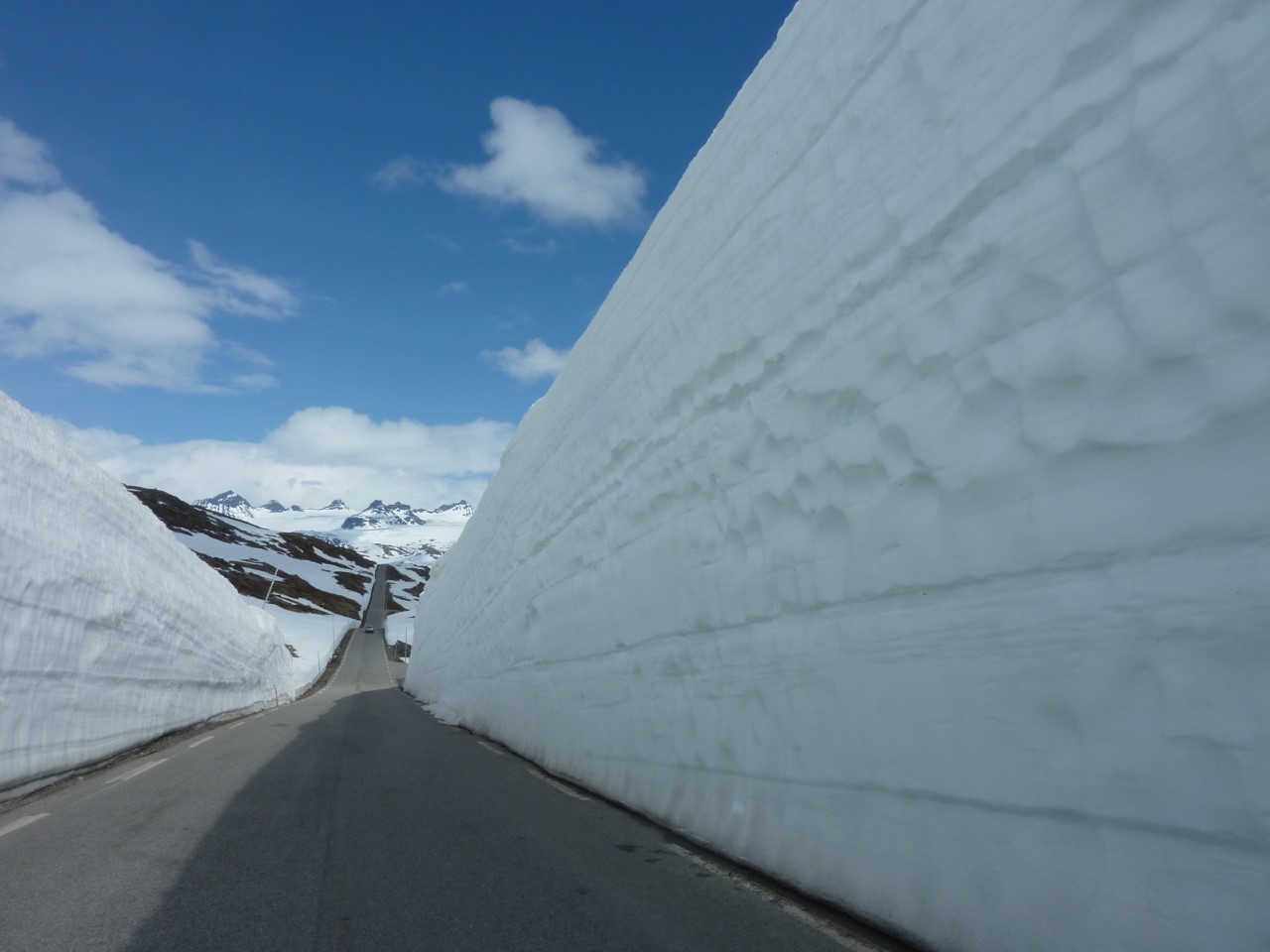
General road and safety regulations
- Petrol stations can be few and far between. Take this into account when driving long stretches
- If you are driving in the mountains, always have some water and snacks with you
- Many trailheads have a parking area with a box were you can pay a small fee for parking your car. This is based on trust, so please respect this
Safety regulations
- It is mandatory to drive with dipped beam ligths at all time, even on the sunniest summer day
- Seatbelts are mandatory for the driver and all passengers
- Never just stop by the side of the road. Always look for designated parking areas or exits
- Norway is extremely strict with drunk driving. Do not drive after you have has any alcohol
Ferry tips
- You can pay for ferries across the fjord at the dock. This can be done by card or with cash
- Enter the dock, in line with the sign of a person/ticket salesman. Not by waiting for the barrier (this is only for locals with a membership)
- The standard price is for a car and the driver. A small amount is added for additional passengers
- There are seperate rates for children under 16 and adults over 67
Important phone numbers to have:
- 175 or +47 815 48 991 for information about road conditions and closures
- Phone numbers of salvage and roadside assistance:
- NAF: +47 23 21 31 00
- Falck: +47 02 222
- Viking: +47 06 000
Last but not least: Enjoy the freedom and take it all in
Many trailheads to our favourite hiking trails are accessible by car, but not by public transport. Besides, public transport in Norway is partially based on the school bus system. This means that in the summer the busses will not be going. With your car, you are free to stop when and where you want, take a break, enjoy the view, and take it all in. Please take into account parking rules. It is not allowed to park on private land (which is most land in the countryside) in Norway without permission of the landowner.
Driving in Norway is an experience like no other! If you are still hesitant of arranging your own Norway road trip, take a look at one of our self-drive vacations. Or let us tailor a vacation specifically to your wishes! With our detailed road book, you won’t have to worry about calculating how long a drive will take, what time you need to leave, and what route you will take.
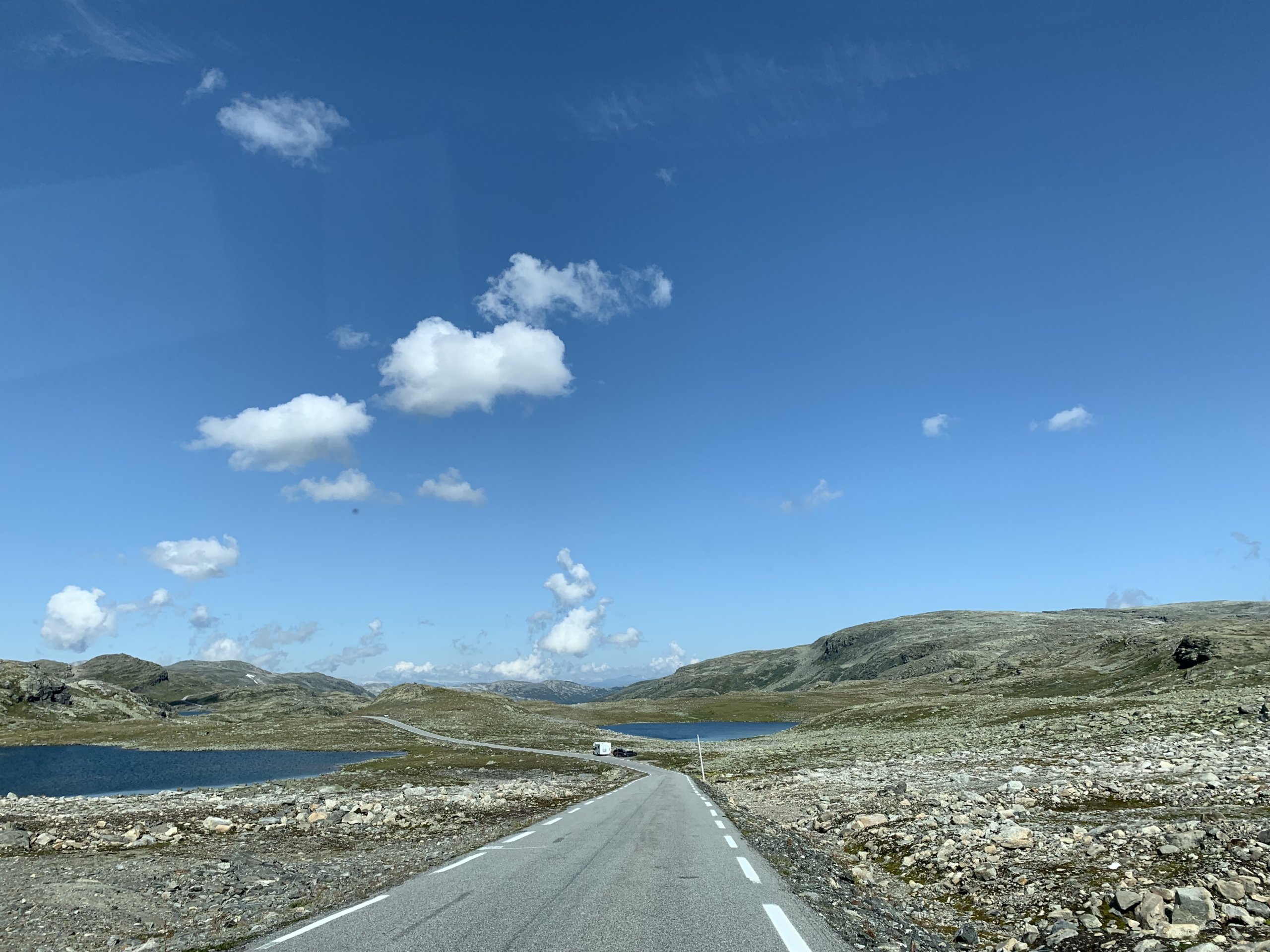

About Anne van Oorschot
Owner and travel designer
She loves to go on adventures with her three children, visiting places all over Norway. Living in Norway as a foreigner gave her the opportunity to be a tourist here even after 20 years. She designs many different vacations, from family adventures to luxurious honeymoons.
